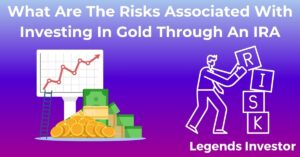Introduction to Investing in Precious Metals
Overview of Why Investing in Precious Metals Can Be a Sound Financial Strategy
Precious metals have long been considered a safe haven for investors. These tangible assets offer protection against economic uncertainty, inflation, and currency fluctuations. Their intrinsic value and historical importance make them a reliable store of wealth and a strategic addition to any investment portfolio.
Investing in precious metals provides a way to diversify and hedge against risks associated with traditional financial markets. Whether you’re a seasoned investor or a beginner, understanding the nuances of precious metal investments can significantly impact your financial stability and growth.
Different Types of Precious Metals: Gold, Silver, Platinum, Palladium
- Gold: Known for its enduring value, gold is the most popular precious metal for investment. It’s used in jewelry, electronics, and as a monetary standard in many countries.
- Silver: Silver is valued for its industrial applications and affordability compared to gold. Its price is often more volatile due to supply and demand dynamics.
- Platinum: Platinum is rarer than gold and silver and is widely used in the automotive and jewelry industries. It’s considered a high-value investment metal.
- Palladium: Known for its industrial applications, particularly in catalytic converters, palladium has gained prominence among investors for its increasing demand and limited supply.
Importance of Physical Ownership vs. Other Forms of Investment
Physical ownership of precious metals offers tangible security and direct control over your investment. Unlike paper assets like ETFs or stocks, physical metals don’t rely on third-party obligations. This can be particularly reassuring during financial crises. However, other investment forms like ETFs, futures, or mining stocks can provide liquidity and diversification for those who prefer less hands-on involvement.
Understanding the Market: Prices and Trends
Key Factors Influencing Precious Metals Prices
Several factors impact the price of precious metals:
- Supply and demand: Mining production and industrial use affect availability and pricing.
- Economic conditions: Precious metals often rise in value during economic downturns or periods of uncertainty.
- Inflation: Metals act as a hedge against rising prices, maintaining their purchasing power.
- Currency fluctuations: A weaker dollar often boosts the value of precious metals.
How to Track Market Trends for Informed Purchases
Staying informed is critical to making smart investment decisions. Utilize tools like:
- Market analysis reports
- Real-time price tracking apps
- Expert commentary and news outlets
Timing Your Investment: The Importance of Patience and Research
Patience is key when investing in precious metals. Avoid rushing into purchases during price spikes and focus on long-term value. Thorough research and market analysis can help you determine the optimal time to invest.
Choosing the Right Metal for You
Comparative Analysis of Gold, Silver, Platinum, and Palladium
- Gold: Stable and less volatile, ideal for long-term wealth preservation.
- Silver: Affordable and versatile, suitable for both new and experienced investors.
- Platinum: Rare and valuable, offering potential for significant appreciation.
- Palladium: High industrial demand, offering growth potential but with higher risks.
Tailoring Your Choice to Your Investment Goals and Risk Tolerance
Your choice of metal should align with your financial objectives. For stability, gold is a safe bet. For higher growth potential, consider silver or palladium. Assess your risk tolerance and diversify accordingly.
Diversification Strategy: Balancing Your Portfolio With Several Metals
A well-balanced portfolio includes a mix of metals to mitigate risks. Diversify across gold, silver, platinum, and palladium to ensure stability and growth potential.
Physical vs. Paper: Benefits of Tangible Assets
Pros and Cons of Physical Ownership Over Paper Assets Like ETFs
Pros:
- Direct control and ownership
- No counterparty risk
- Tangible value
Cons:
- Storage and security costs
- Less liquid than paper assets
How to Secure Physical Precious Metals
Invest in secure storage solutions and purchase from reputable dealers. Ensure you have proper documentation to authenticate your metals.
Long-Term Benefits of Having Tangible Assets in Your Portfolio
Physical metals provide lasting value and act as a hedge against financial instability. They’re an essential part of any robust, long-term investment strategy.
Where to Buy: Dealers, Mints, and Online Platforms
Reputable Sources for Purchasing Precious Metals
- Dealers: Local dealers often offer personalized service.
- Mints: National mints like the U.S. Mint or Royal Canadian Mint ensure quality.
- Online platforms: Websites like APMEX or JM Bullion offer convenience and variety.
Navigating Local Dealers vs. Online Platforms
Local dealers may provide immediate access and physical inspection of metals, while online platforms offer broader selection and competitive pricing. Weigh the pros and cons based on your needs.
What to Look for in a Trustworthy Seller
- Transparent pricing
- Positive reviews and reputation
- Proper certifications and documentation
Understanding Purity, Weight, and Authentication
Ensuring the Quality of Your Precious Metals Purchase
Invest in metals with verified purity standards. Common purities include 99.9% for gold and silver.
Understanding Hallmark, Weight Standards, and Certificates of Authenticity
Look for hallmarks indicating metal purity and weight. Certificates of authenticity provide proof of quality and legitimacy.
The Significance of Assay Services and Testing
Assay services ensure the accuracy of metal purity and weight, providing confidence in your investment.
Legal and Tax Implications of Buying Physical Metals
Navigating Taxes and Regulations When Investing in Precious Metals
Understand local tax laws and compliance requirements to avoid penalties. Taxes may apply to capital gains, sales, or inheritance.
Reporting and Compliance Considerations
Maintain accurate records of your transactions. Report gains or losses to tax authorities to stay compliant.
Insights From Financial Experts on Tax-Efficient Purchasing
Consult with tax professionals to identify strategies for minimizing your tax burden and maximizing returns.
Safe Storage Solutions: Keeping Your Investment Secure
Options for Secure Storage: Home Safes, Safety Deposit Boxes, and Third-Party Storage Facilities
Each storage option has its benefits:
- Home safes: Convenient but require robust security measures.
- Safety deposit boxes: Secure but less accessible.
- Third-party facilities: Offer professional-grade security and insurance.
The Importance of Insurance and Peace of Mind
Insure your precious metals to protect against theft or loss. Many third-party storage facilities include insurance in their services.
Balancing Accessibility With Security
Consider how often you may need access to your metals. Strike a balance between convenience and safety.
Selling Your Precious Metals: Exit Strategies
When and How to Consider Selling Your Physical Metals
Monitor market trends to determine the best time to sell. Consider your financial goals and the metal’s current value.
Liquidity Considerations and Finding a Buyer
Work with reputable dealers or platforms to ensure fair pricing and smooth transactions.
Understanding the Resale Value and Minimizing Losses
Understand the factors influencing resale value, such as market demand and metal purity. Maintain records to verify the quality and authenticity of your metals.
Conclusion
Investing in precious metals is a time-tested strategy for wealth preservation and financial growth. By understanding market trends, choosing the right metals, and ensuring secure storage, you can build a resilient and diversified portfolio. Stay informed, consult with experts, and make strategic decisions to maximize the benefits of precious metals investments.



